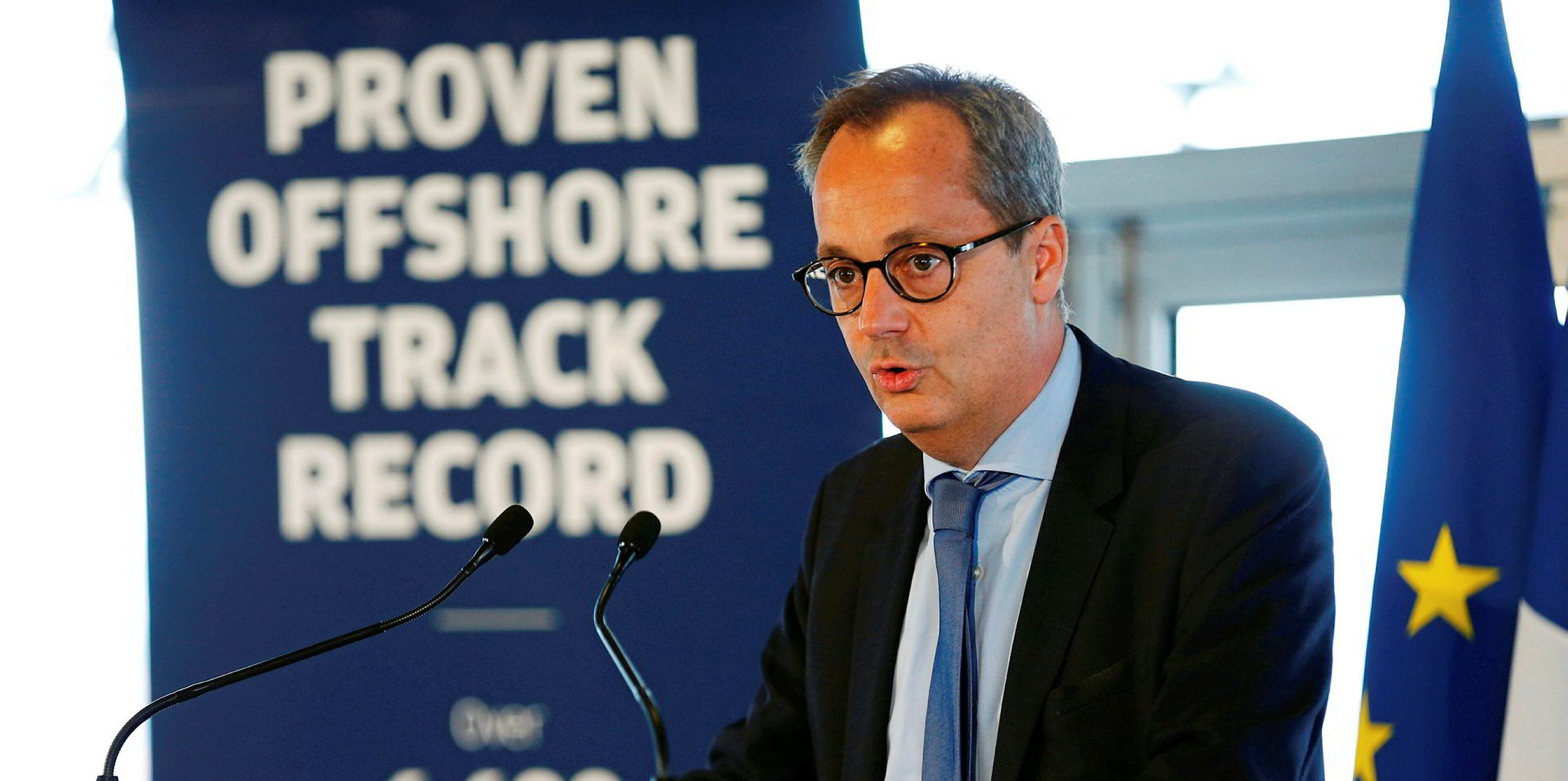GE Renewable Energy began 2019 in the red as a series of factors drove it to a $162m loss in the first quarter, although it expects an improved performance this quarter and especially in the second half.
The operating deficit – compared to a $77m profit at the same stage in 2018 – was accompanied by a 3% fall in revenues to $1.64bn, with a 9% increase in services failing to fully compensate for a 7% decline in equipment revenues, said parent group GE. Segment margins were negative 10%.
Finance chief Jamie Miller told analysts the quarter “came in lower than our expectations,” as the US wind and hydro turbine OEM grappled with higher costs resulting from “legacy matters” involving the ongoing Alstom joint-venture consolidation, “project issues,” and contract terminations.
She did not detail the legacy matters or project issues. The contract terminations reference may have been for GE having lost 1GW of capacity to Siemens Gamesa Renewable Energy comprising two projects off France whose lengthy delays had significantly impacted their financial characteristics, the US company told Recharge earlier this month.
GE also incurred expenses with R&D investments for its 12MW Haliade-X offshore and 4.8-5.3MW Cypress onshore turbines – platforms that showcase novel technology it believes will provide competitive advantages and global market share gains.
Commercialisation of the Haliade-X alone is being supercharged with a $400m development budget, with expectations first units will be available for delivery in 2021 from GE’s nacelle factory in Saint Nazaire, France.
First quarter results were also hurt by pricing pressure and the impact of a 25% US tariff on steel from most countries including lower-cost origins in Asia.
These “headwinds” were partially offset by productivity gains, “good” product cost control and higher volume, she added.
Quarterly orders were 1% higher at $2.45bn, or 13% up in megawatt terms at 2.66GW. Turbines booked totaled 970 versus 936 a year earlier.
GE anticipates continued megawatt growth as customer preference shifts toward larger, more efficient turbines to drive down costs and compete with other power generation options.
Miller said GE was encouraged by easing price declines for turbines, in part because of strong US demand as developers lock-in orders in a rush to qualify wind projects for federal production tax credits before they expire this year.
“We’re seeing price declines continue to moderate as the industry ramps up for PTC-driven orders this year and next, and international markets normalizing from moving from feed-in tariffs to auctions,” she said on a conference call.
The OEM was prepared to fully address the challenge of sharply ramping US onshore turbine production going forward, asserting that GE Renewable Energy boss Jérôme Pécresse and his team “have solid plans in place to deliver volume,” according to Miller.
“This volume and leverage improvement should put renewables on track for the full-year guidance of strong double-digit revenue organic growth in margins,” she added.
GE expects turbine production to more than double this quarter from the first and “even more” in the third and fourth quarters.
Miller also highlighted GE’s success in boosting services and re-powering business as the company squeezes more revenue from its global fleet of 40,000 wind turbines.
‘multi-year journey’
Chief executive Larry Culp cautiously sought to put a positive spin for renewables and the parent company more broadly, noting that “one quarter is a data point not a trend” and “part of a multi-year journey.”
GE is calling 2019 a "re-set" year. Culp conceded the troubled conglomerate still has a “long way to go” to clean up its balance sheet and by extension, regain confidence of investors who have seen share prices plummet over the last several years.
In the first quarter, parent GE had $3.55bn profit versus a $1.18bn loss a year earlier. Revenue declined 2% to $27.3bn.
Renewables along with aviation and power are the three foundation pieces Culp has identified for his vision of a financially sound and growth-oriented GE next decade.
Updates and refines throughout

